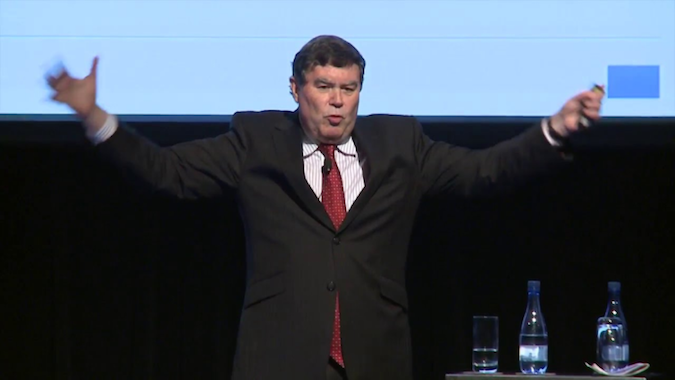CX as a business differentiator and how marketers can create tangibility around customer-centric leadership
Share

Customer experience is more important than ever, says Emma Roborgh, even if you work in the B2B space.
Want to know the real reason customers leave you? You might be surprised.
Often it’s not the product or the processes. Up to 70% of the time, it’s down to the service they receive.
“The research is quite astonishing,” says Professor Linden Brown, chairman and co-founder of MarketCulture Strategies Inc, a Silicon Valley company focused on measuring the level of customer-centric cultures of organisations.
“Between 40-70% of customers, whether they’re B2B or B2C, leave their supplier because they believe they don’t really care about them.
“It’s a hugely important thing in the customer/brand relationship – that feeling of ‘they’re really trying to help me. They’re trying to make it easier for me to do business with them. They really like me as a person. And – in a B2B context – they like dealing with us as a company’.”
Customer service and customer experience (CX) has always been important, but today more so than ever.
The service levels set by consumer brands set the bar for everyone else. If you’re working in B2B, you’re judged against the standards set by Amazon, Uber, Apple and the like – and the B2B customer journey is significantly longer, more complex and involved than booking a cab or purchasing a record.
Brown explains that because of this, customer-centricity is a potential key differentiator and is critical to longer term sustainability and survival for businesses.
“Technology is changing the way day-to-day customers are now getting information, interacting with their suppliers and learning about what’s available more broadly around the world,” he says.
“Now, the way in which you translate that into what you’re delivering can differ and it can differ in B2B between industries. But the whole need, if you like, to develop a strong customer-centric culture is the same.
“It’s what you create through relationships – it’s loyalty and advocacy. And in some ways, you could almost say that it’s more important in B2B that they actually get that right.”
Is marketing responsible for CX?
Simply, yes. CX helps lift marketing out of the tactical and back to its proper role, which is as a driver of business success today, and gearing the business to be able to succeed tomorrow.
But how do marketers elevate themselves to have those strategic conversations and position marketing as a key part in business?
“For marketers to get into this strategic conversation, I believe they need to firstly address culture and be able to sensibly lead a customer-focused culture across the entire business model, not only within marketing,” says Brown.
“Getting involved in understanding and leading what is required to develop a customer-centric culture in the business will cause the marketing people to engage very closely with the HR and the finance people, because there’s money involved. That’s been, I think, the missing link: the culture bit.
“Strategy has to go through culture to actually deliver to the end customer. So, culture can be an inhibitor, or it can be an engager.”
Create tangibility
One of the most difficult thing for marketers is to create tangibility around customer-centric leadership, but Brown explains there are a few ways to do it. The first is to be a role model, building culture and doing what they expect other people to do. Going out and meeting customers, for example – that’s tangibility. The other way to create tangibility is with measurement, as it shows if you’re progressing or not.
“If you surround that measurement with feedback from employees and customers, you’ll get some surprising theories. You’ll find that people in the business, even those not in the frontline, have a lot of insight as to what is needed to do things better, and also what is stopping them from delivering great value to their business customers. So, the inhibitors and also the opportunities are identified,” he says.
“Of course, there are the external measures that are used around customer satisfaction. Net Promoter Score is one of those that’s used fairly widely. Then we found direct relationships between some of those factors that you survey internally about the external environment that do drive future business performance like size growth, profitability, innovation, customer advocacy and so on.
“So, you’re really looking for leading indicators. What are we driving towards? What are the things that will strengthen customer relationships and retention? Are we doing things that are going to drive business growth and profitability? Those are the leading indicators.”
Professor Linden Brown will be part of the customer-centricity panel at the B2B Marketing Leaders Forum in Sydney on 16-18 May 2017. He will be joined by Paul Robson (Adobe), Lexie Denby (TAL), Glenn Flower (Telstra Wholesale) and Jennie McLaughlin (EY).
–
Emma Roborgh is founder and marketing director, B2B Marketing Leaders Forum APAC 2017, at which Professor Broan joins Ray Kloss, John Clay and Natalie Feehan and other experts.
–
Image source: original article »















